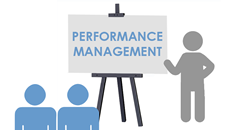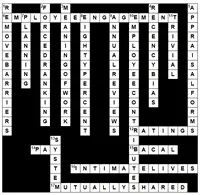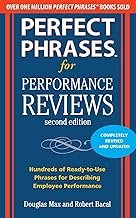Performance Management
Using Bi-directional Performance Management
Summary: Here's a secret about performance management and performance appraisal -- they work best when information goes both ways. From manager to employee and from employee to manager, feedback can travel so both people work as a team so the employee improves his or her performance, and the manager improves his or her ability to help employees perform beter.
Over the past few years, there has been more careful examination of traditional forms of performance management and appraisal, and a number of people have suggested that there are a number of reasons why most performance management systems do NOT add value, or recoup the time and expense needed to carry out the programs. In our book Why Does Performance Management Fail, we have outlined many of these criticisms.
While it is one thing to suggest that organizations scrap their existing programs (and that's probably not a bad idea), it is another to suggest ways that are better. We are going to look at a half-way approach to improving traditional performance management, something that you can introduce into your workplace immediately. Before we explain bi-directional performance management, let's look at why it is a good idea.
The Nature of Performance
Traditional performance management approaches are based on the assumption that an organization's productivity is additive. That is, if employee A and employee B and employee B do their parts, the organization will, as a whole accomplish it's goals and objectives. It also treats employees as independent...that is the work of employee A does not impact on that of employee B.
A bit of thought on the issue brings us to the conclusion that performance is not additive, and a number of the factors that affect individual performance are not under the direct control of staff members. We are beginning to understand that performance is a result of the system of work, and all it's parts, not just each individual employee. Employees affect each other's abilities to do their individual job tasks. One "bad" employee can actually impact on many, while a "good" employee may not do only their own job, but help others do theirs.
Perhaps even more important is the relationship between supervisor/manager and staff member in determining the effectiveness of work. One way of conceiving of this is that while the staff member works for the boss, the boss also works for the employee. In practical terms, that might mean creating and obtaining resources so the employee can succeed, clearing out obstacles, addressing problems not under the control of the employee, but influenceable by the boss, etc. We call this bi-directional influence.
So while individual performance is influenced by many factors within the system of work, the primary one we can do something about is the boss-employee relationship. Rather than look at an additive model of performance, we recognize that performance is a dynamic result of manager helping staff, and staff helping management (it's much more complex than that but we have to start somewhere.
If performance is a function of the manager-employee relationship, how can we use performance management and appraisal to improve performance?
Bi-directional Performance Management
Bi-directional performance management recognizes that for performance to improve, both manager and employee must receive feedback on how well they are fulfilling their obligations to the organization and to each other. It also recognizes that each staff member and his/her manager must clarify and negotiate expectations regarding each other's roles on a regular basis.
And perhaps, most critically, bi-directional performance management is designed for a single purpose: to improve the performance of the organization. It's not to determine pay, it's not to affix blame, it's not to put more paper in the personnel files. Pure and simple, it is to improve performance.
The Nuts & Bolts
A nice characteristic of bi-directional performance management is that it requires very little additional work. It "fits" in with existing mandatory systems quite well, unlike something like the much broader 360 appraisal methods which are unwieldy, expensive and difficult.
The core of bi-directional performance management is the performance planning phase. While traditional performance management systems focus on what the employee should be doing during the next period, and establishing standards of performance, bi-directional performance management adds the additional component of clarifying the manager's obligations and responsibilities to ensure that the employee can achieve his or her objectives and standards. So each performance planning episode will contain:
dialogue
to establish and define the job tasks of the employee.
dialogue to establish what the employee needs from the boss to
achieve those goals
Note that both of these are negotiated through cooperative dialogue.
From the manager's point of view, what kinds of questions would we need to have answered to capture this second component? You can probably think up many on your own, but here are some examples:
What barriers do you see to achieving your objectives (goals, standards), and what can I do now and in the future to help you overcome them?
More specifically:
Do you have
the physical resources to do this task?
Do you have the skills needed to do these tasks?
Do you have the proper authority to do these tasks?
Is there anything you need me to do "upstairs" that
would help?
If you are lacking the skills or resources, what can I do to
help you get what you need?
At the end of the performance planning episode, the employee should have some form of action plan for each task or project. And, so should the manager.
On the appraisal side, (actually we should call it the feedback side), the process is again similar to traditional methods. Rather than manager giving feedback to the employee, the employee also has the opportunity to give feedback to the manager on how effective s/he was in fulfilling the obligations outlined n the planning phase. Once this bi-directional feedback process is completed, the planning process begins again. We set up a continuous planning-feedback loop.
So, what we have done is begun to recognize the bi-directional effects that affect performance. We are putting both manager and employee on the same side for the purpose of making the organization more effective.
Some Caveats
Bi-directional performance management isn't going to cure all the ills in your existing performance management system -- it is more a Band-Aid than anything else. That is because there are many other reasons why standard performance management methods are failing in many workplaces. However, since the reality is that most organizations require some sort of traditional system, the question shifts to "How can we make the best of this, and at least get some benefit from having to do it?"




